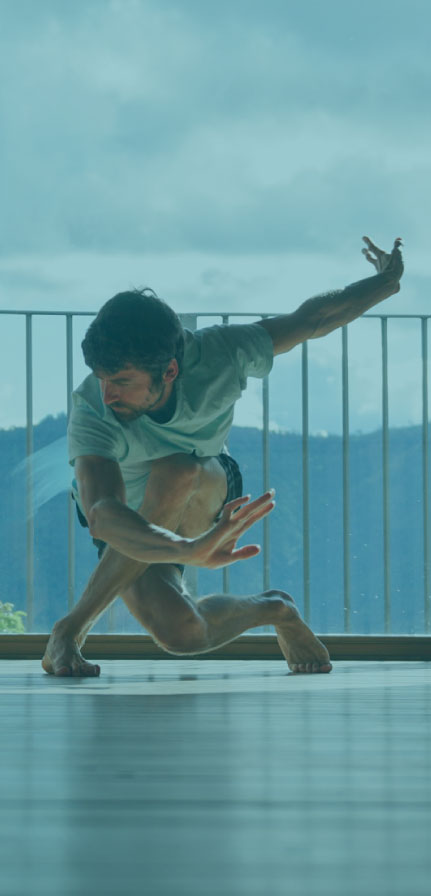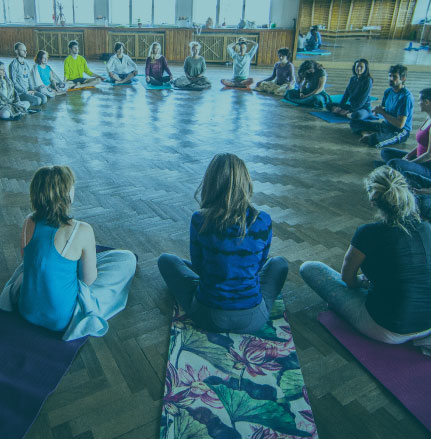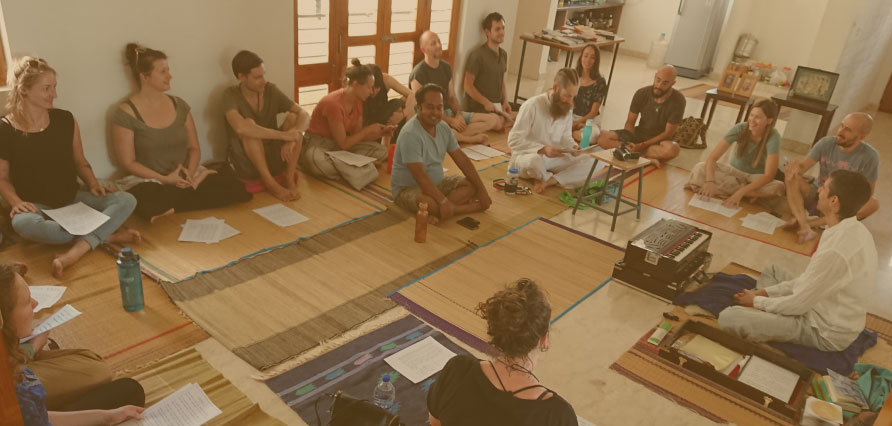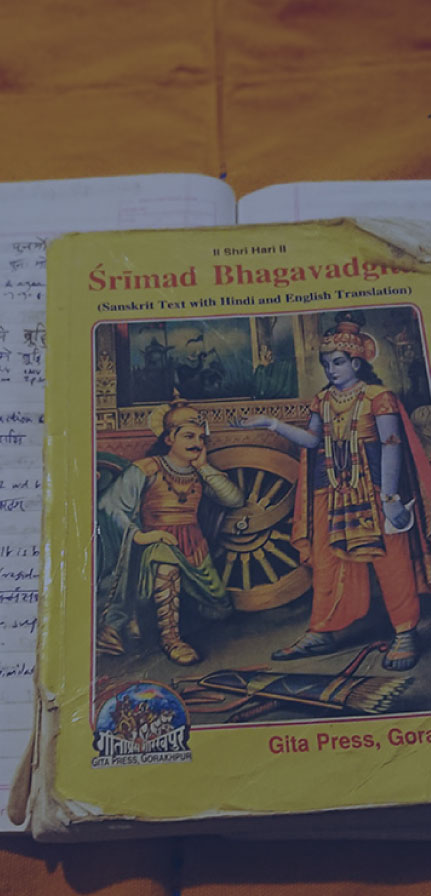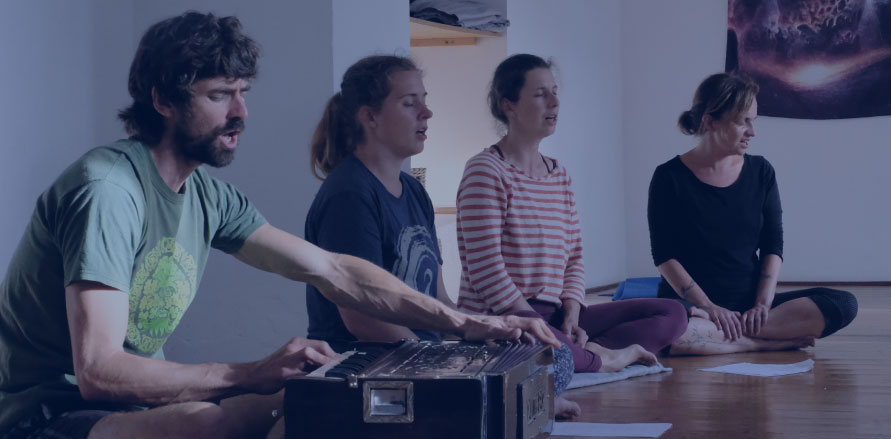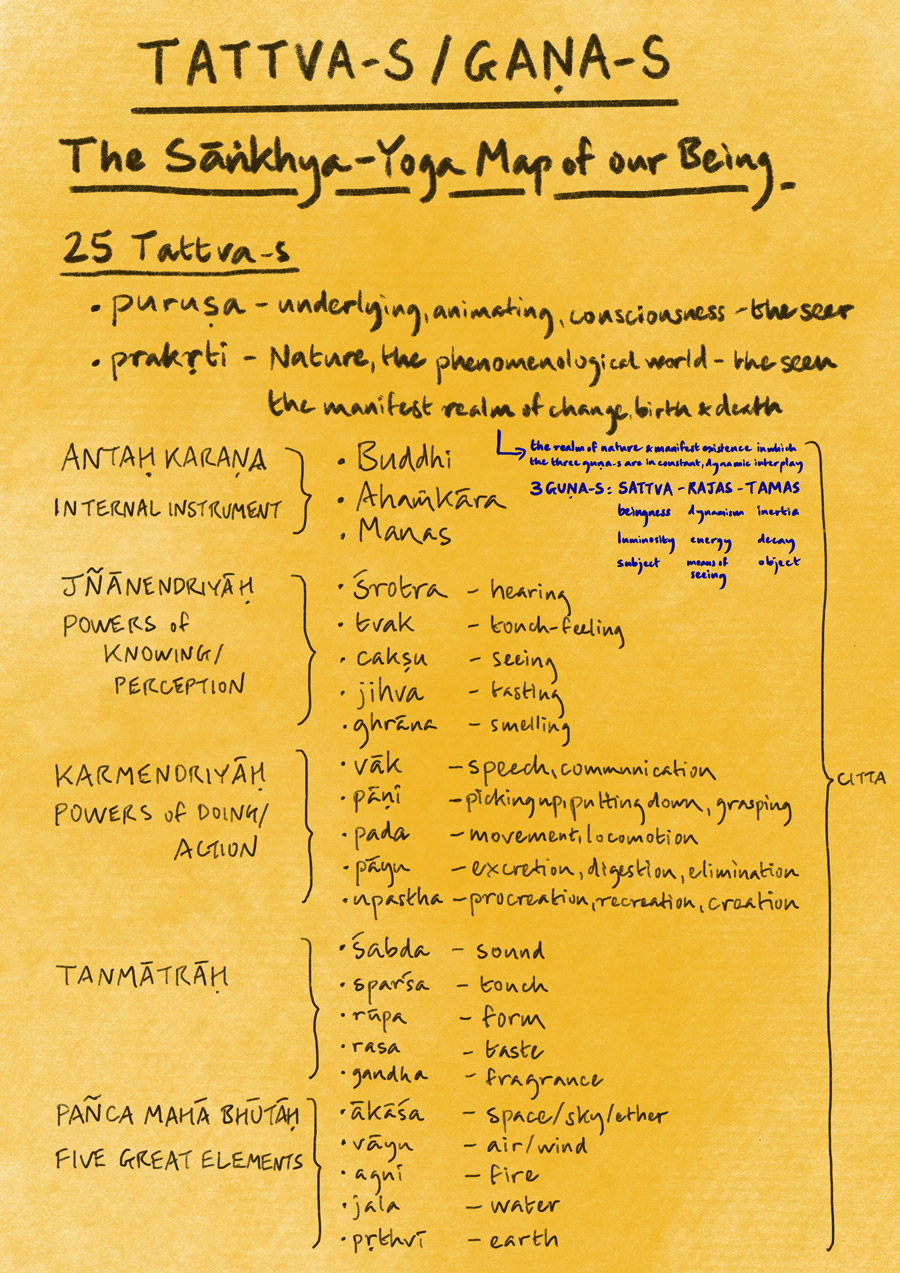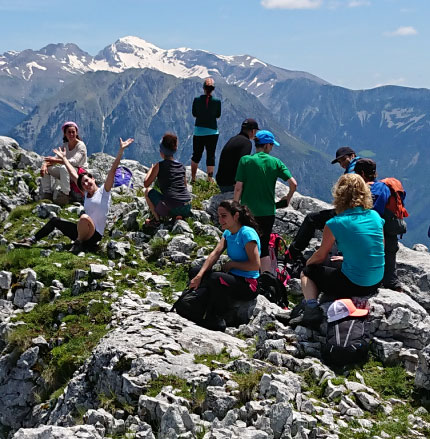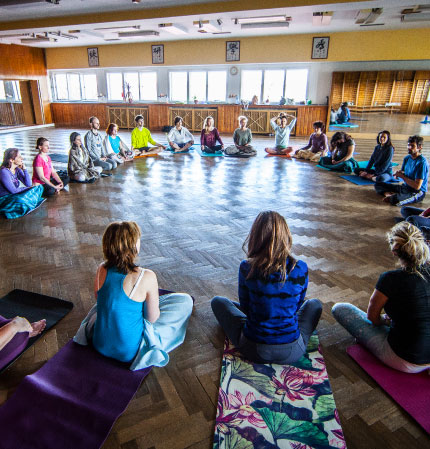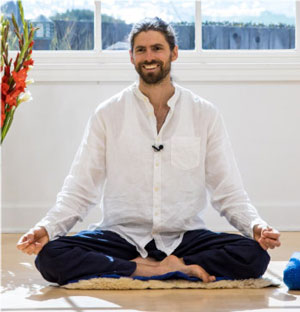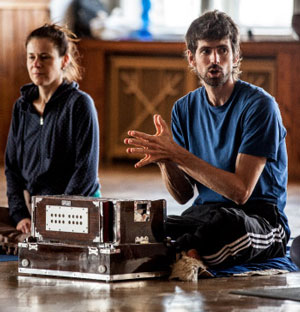
Whole Life Yoga
Yoga is balance, integration, skilfulness and efficiency.
Yoga practice is about cultivating sustainable harmony.
Yoga is about the whole of our lives: everything we do, all we experience. It is about stretching our understanding of who we really are, strengthening our connection to the innate wisdom of our conscience and rehabilitating our broader human capacities while working respectfully with the realities of our individual natures and our diverse responsibilities.
Yoga practice is about training ourselves to be able to find joy in the everyday wonder of life and steadiness in the face of its inevitable challenges. It is about meeting and refining our own patterns and habits and inviting ways of being that are conducive to sustainable, integrated health and wellbeing.
James works with a range of mutually complementary lenses to explore yoga principles in practical application, including: yogic movement and meditation, practical philosophy and mythology, kīrtan and the yoga of sound and song, council, inquiry and authentic relating, study of Sanskrt texts and Sanskrt recitaiton.
Find out more about these different aspects of whole life yoga here on this page, or join an upcoming program.
The Yoga of the Whole Human Being
According to the yoga darśana, the yogic vision or understanding of reality, we come from the wholeness of pure consciousness, the consciousness in which everything exists. When we are born and become part of nature, however, we are constituted of different parts. Yoga seeks to integrate and reconcile all these parts, to bring all the diverse members of the gang of our being into harmonious togetherness. When this happens, our awareness naturally settles, quietens and allows us to relish and experience our conscious essence – our true self. At the same time, in this state of balance, we also experience greater skillfulness and efficiency.
If we are to invite this state of yoga, we have to respect and integrate all the members of this gang of our being. Sometimes people say yoga is about joining or integrating the mind and the body, but it is more than just that. Yoga works with a model of our evolutionary existence from its closely related darśana called Sāńkhya which lays out a clear map of these constituent parts that we invite into greater cohesion through yoga practice. These constituent parts are called TATTVA-s and GẠNA-s. Tat means ‘that’, in the sense of that which exists. Tattva-s are parts of that which is real and exists. Gaṇa means ‘group, or ‘member of a group’, something that can be enumerated.
When we say that yoga is about joining, unifying, integrating, balancing, harmonising, these are the different constituents, members, and instrumental powers of awareness that we need to bring into a harmonious, integrated, joined-up state.
If we are going to bring all these different parts of ourselves into togetherness, we have to work with and respect our individual nature, and include all our different parts. In its very nature and conception yoga practice is a holistic, whole system endeavour. Of course, we are each a unique conglomeration of these different aspects of our human power and intelligence. For example, some of us are more active, some more reflective, some more or less emotional, physical, intellectual, sensual and so on. To be in harmony, some of us need to pay more particular attention to, for example, our kinaesthetic powers, or our intellectual and reasoning capacities, to our need for solitude or company, for quiet, dynamism or creative endeavour and outlet. Us humans come in quite a range of shapes, sizes, temperaments and predilections. The path of yoga is broad and inclusive, its principles work for anyone who is open to them and can be applied just as readily to a path of practice that emphasises action, inquiry or devotion. Nonetheless, regardless of our temperament and personality, if we are to come to yoga, we will have to integrate all parts of ourself. As such, yoga practice addresses and works with the whole human being.
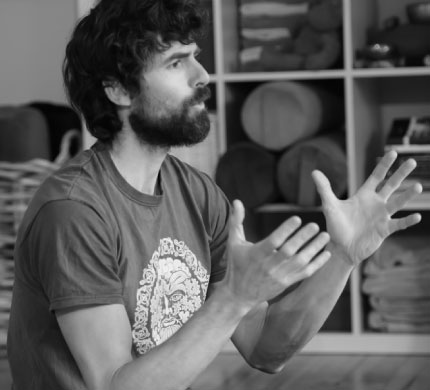
PRACTICAL YOGA PHILOSOPHY
Working direct from the miracle-mirror Sanskrit yoga texts which encode in beautiful, distilled form the super-practical principles of yoga as the art of living and dying, time-tested and peer reviewed over millennia and rendered accessible, relevant and applicable here and now through a relatable, practical and holistic teaching method.
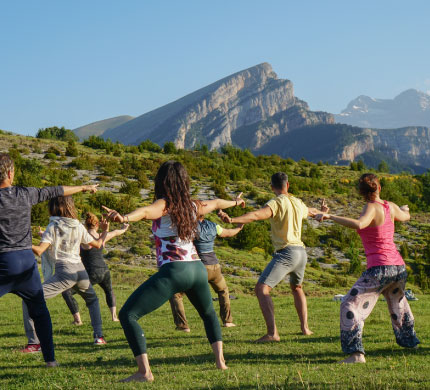
YOGIC MOVEMENT
Work that marries the powerful technologies of haṭha yoga with a holistic approach to broad-spectrum human movement. Rehabilitating our physical capacities and the fields of our bodies so we can more readily access the potency of haṭha yoga principles and experience greater balance, harmony, skilfulness and efficiency through all the movements of life.
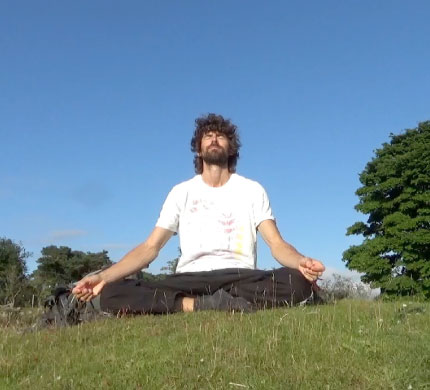
MEDITATION
Meditation that you can integrate into your life, to help you move from the centre and operate with greater ease and steadiness.
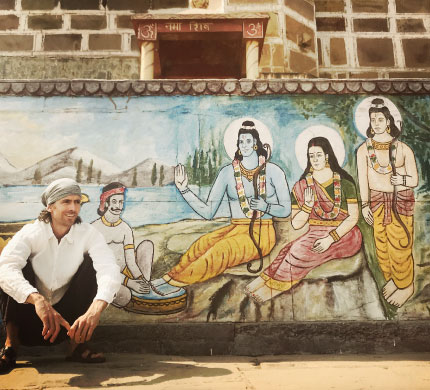
STORYTELLING and PRACTICAL MYTHOLOGY
Drawing on stories from the Indian yoga tradition and our broader human heritage to communicate the timeless wisdom teachings and support structures of yoga in ways that we can enjoy, digest and remember – installing them into our cells so they become part of our living memory and active resources.
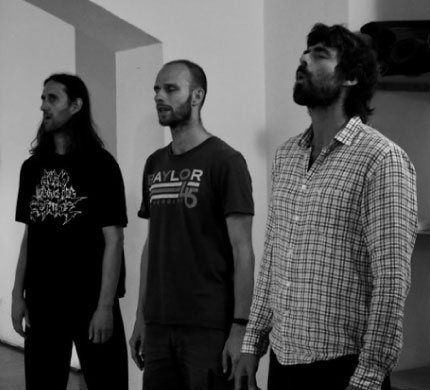
KIRTAN: THE YOGA OF SOUND AND SONG
Soulful, moving, inclusive and powerful, the simple yet transformative practice of call and response and group singing, using traditional songs and chants from the Indian and broader human traditions and new and original songs of devotion.
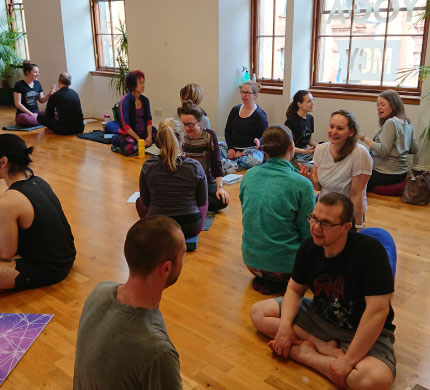
COUNCIL and Authentic relating
Inquiry and authentic relating to help us get to know ourselves more deeply and more authentically. When we are humans with but two eyes, there is always more that we cannot see than we can. When we come together, to listen and share, we can learn a lot from each other.
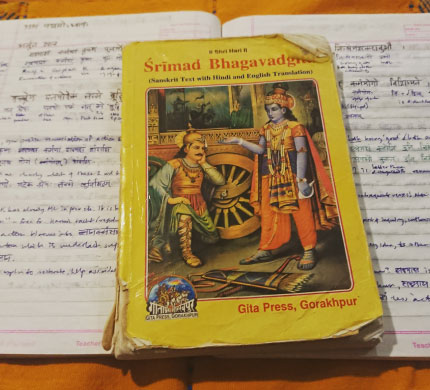
Sanskṛt Texts and Recitation
When James encountered the yoga texts, he realised he wanted to be able to engage with them in the original. So he dedicated several years to learning Sanskṛt, initially in Thailand at the university where he was teaching English, then for several years in India where he gained a Sanskrit MA. Working directly from the original texts allows us to appreciate the robustness, breadth and depth of these amazing time-proven teachings. For those who would like to learn to recite, James makes this powerful practice clear and accessible.
What am I Doing Here?
This is a good yogic question. So is: ‘where am I in this?’ So is ‘what’s the truth here really?’ So is ‘why am I doing what I am doing? Where am I really acting from?’
Yoga is about questioning, exploring, inquiring. It does not give us the absolute ‘answer’. Yoga is far too wise for that. It recognises that in some situations, what would ordinarily be unconscionable is the appropriate action.
What yoga does offer us is a time-tested, robust structure and broad-spectrum, whole system method to keep investigating and inviting ourselves deeper into harmony and self-awareness.
Read more here about Yoga Questions to Live By.
But first off, ‘what am I doing here? Is this the right place for me? I think if you have come here there may be something of value and interest for you. This work is for people who are seeking to live more skilfully, leaving things better than we found them, honouring the gifts of our birth and inheritance and inviting deepening integration, reconciliation and fulfilment.
Is this for you?
- You would like to be more deeply acquainted with the practical, applicable wisdom of the yoga texts and tradition.
- You would like to gain deeper access to authentic teachings and practical wisdom proven in the furnace of time
- You would like to go beyond translations, enter the miracle-mirror texts and develop a live, deepening personal relationship with the time-tested principles of yoga, so you can apply them with confidence and discernment in the arena of your own life with its inevitable challenges and changes.
- You are a sincere seeker of truth and you are keen to courageously explore what it means to discover more of your true depths and live with greater congruence, purpose and discernment.
- You are blessed with the spirit of an independent seeker and you value the support of community and shared endeavour, the container of satsang, a robust, confidential space to come together and explore what is.
- You recognise that health is a holistic, whole system endeavour and you’d like to deepen your awareness of how you can make a positive impact on your own long-term health and do what you can to help leave this beautiful planet a little bit better than you found it.
- You know you don’t know! You are ready to learn, explore and inquire together.
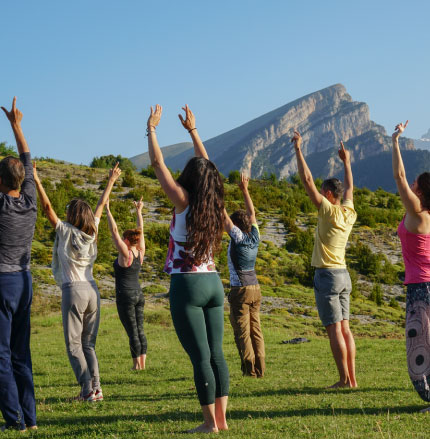
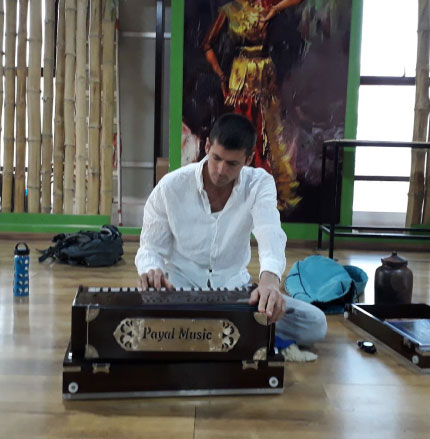
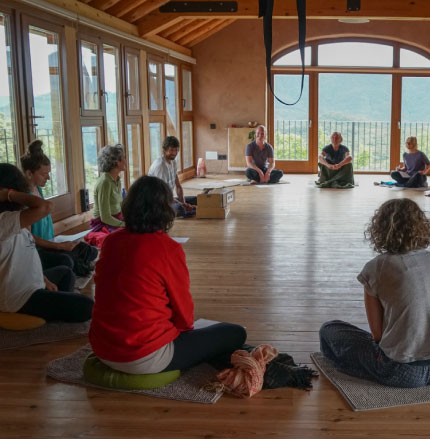
Whole Life Yoga Newsletter
The place to find out first about all James’ programs and offerings, receive articles, recommendations, and access special rates for programs.

